thenewbigpicture
Latest

Lights out on a ghostly James Webb Space Telescope inspection
The James Webb Space Telescope (JWST) might be the most important scientific instrument ever developed. It'll peer back in time over 13 billion years to the early universe and look for signs of life around the recently discovered TRAPPIST-1 planetary system.
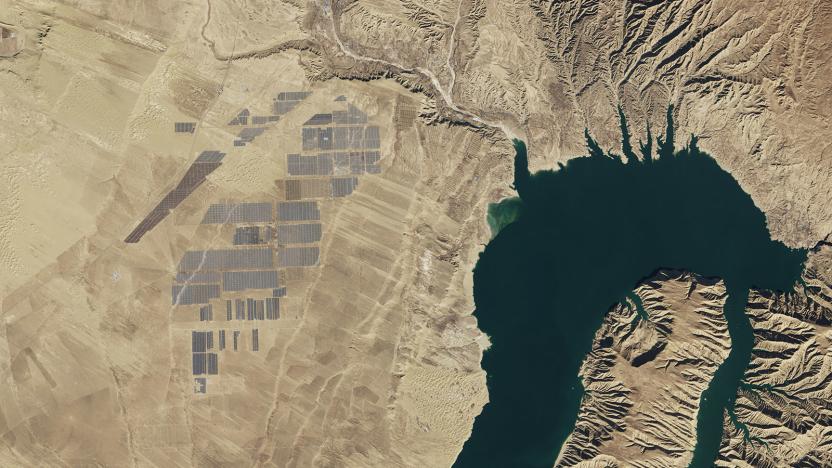
The world's largest solar farm, from space
Just over two years ago, California's 550-megawatt Topaz Solar Farm was the world's largest solar project. A year later, the 579-megawatt Solar Star farm, also in California, laid claim to the crown, and in 2016, India's 648-megawatt Kamuthi Solar Power Project was top photovoltaic dog. However, China is now the leader of this planet-friendly competition, by far, with the 850-megawatt Longyangxia Dam Solar Park. All told, it can power 200,000 homes at the peak of production.

Our digital future as a 'Forest of Numbers'
Over the next ten years, we'll see ever-faster chips, artificial intelligence and exponentially more data. Forest of Numbers, an exhibition by architect Emmanuelle Moureaux at the National Art Center of Tokyo (NACT) gives viewers a chance to contemplate that future by gazing into what looks like a never-ending string of digits. Careful observers will also spot two girls and a cat, showing that there's humanity buried somewhere in all the data.

3D stereoview 'VR' hellscapes from the 1860s
Not long after photography was born, someone figured out that showing each eye slightly shifted views of the same image makes you think you're seeing a three-dimensional scene. That idea gave birth to stereoscopic imagery, 3D movies and, eventually, VR. (Victorian stereoscopes even look like steampunk versions of modern VR headsets).

An artwork controlled by a colony of bacteria
The Tate Modern's Turbine Hall has always been a vacuous space. Five storys high, with 35,000 sq ft. of space for artworks, it's been home to some of the London museum's most memorable exhibitions. Its latest, by sheer spirit of invention, is no exception.

Eight hours of air traffic in one image
A couple years back, a composite image showing seven hours of takeoffs at LAX airport went viral. The man behind that image, Mike Kelley, has spent the time since working on expanding his initial idea. The result is Airportraits, a photo series that repeats the trick . From Tokyo's Haneda to London's Heathrow, Kelley sat, stood and occasionally danced while shooting hundreds and thousands of photos of aircraft taking off. He then stitched the images together to create a composite image (a single image comprised of elements from multiple photos) that represents his time at each location. Kelley leaned on his experience as an architectural photographer to build the images. He often uses light painting, blending natural and artificial light to create composite images that cast buildings and interiors in an almost magical light.

The Puerto Rico blackout, from space
A fire at a power plant in Puerto Rico left almost 1.5 million homes and businesses without power on Wednesday night. On the ground, businesses were forced to close, and traffic ground to a halt as lights went dark. Around 340,000 people were left without water, and millions were without air conditioning and fans in 90-degree heat. A huge number of Puerto Ricans are still affected, and the scale of the problem is visible from space. NASA's Earth Observatory shared before-after images of the island, taken by The Visible Imaging Radiometer Suite (VIIRS) on the Suomi NPP satellite. The first image, taken at 2:50AM local time on Wednesday, shows the island bathed in artificial light, especially concentrated around the capital city of San Juan in the northeast. The second, captured at 2:31AM on Thursday, paints a very different picture. While San Juan is still fairly lit, surrounding urban areas are not, and many rural areas are pitch black. The southern city of Ponce is almost entirely in the dark. The images were captured using VIIRS "day-night" band. Earth Observatory explained that this band "detects light in a range of wavelengths from green to near-infrared and uses filtering techniques to observe signals such as gas flares, city lights, and reflected moonlight." Moonlight is the reason that the shade of the ocean shifts between the two images. Power had been restored to just under 400,000 homes and business by Thursday night, but millions are still without electricity. The island's government-owned power authority AEE said it expected more than half of its customers to have power by Friday morning, and 90 percent are hoped to be connected by Saturday.
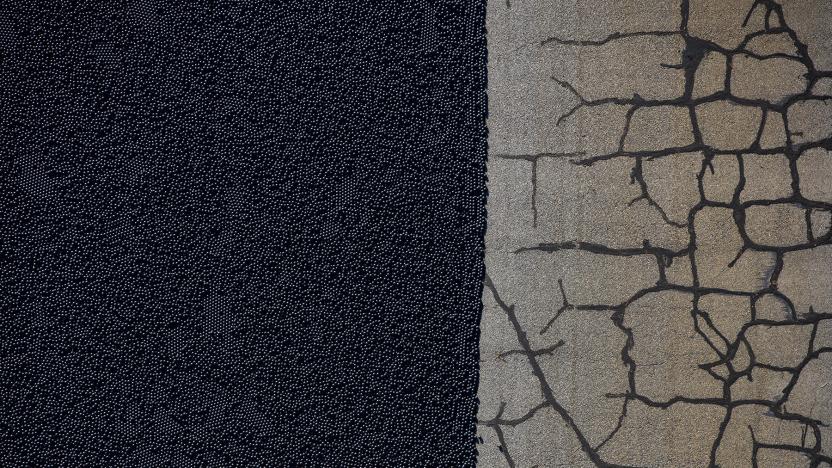
The drought-busting balls that don't bust drought
California's water problem is severe. Despite 2016 seeing a distinct improvement in precipitation over previous years, to almost average levels in many areas, much of the state is in extreme drought. As well as ordering mandatory water reductions, the state has also been looking to other solutions. "Shade balls," the 4-inch wide black plastic balls pictured above blanketing Los Angeles Reservoir, have been touted as one of those solutions. But they're not. The primary purpose of the release, which went viral last year, was to obey Federal rules on covering drinking water. The Los Angeles Department of Water and Power (LADWP) had previously used the balls in smaller reservoirs, and in the case of the Los Angeles Reservoir, says the balls helped the department save more than $250 million over installing a more permanent cover. Although they were released to headlines like Shade Balls in Los Angeles Reservoir to Save 300 Million Gallons of Water Annually, the main benefit of the balls is to prevent sunlight from reacting with the chlorine-treated water and naturally occurring bromide to create the possible carcinogen bromate. The shade balls aren't a complete solution, and there are accusations that they may deteriorate and release dangerous chemicals into the water. The water in the Los Angeles Reservoir, however, goes through a UV treatment process before it makes its way to citizens.
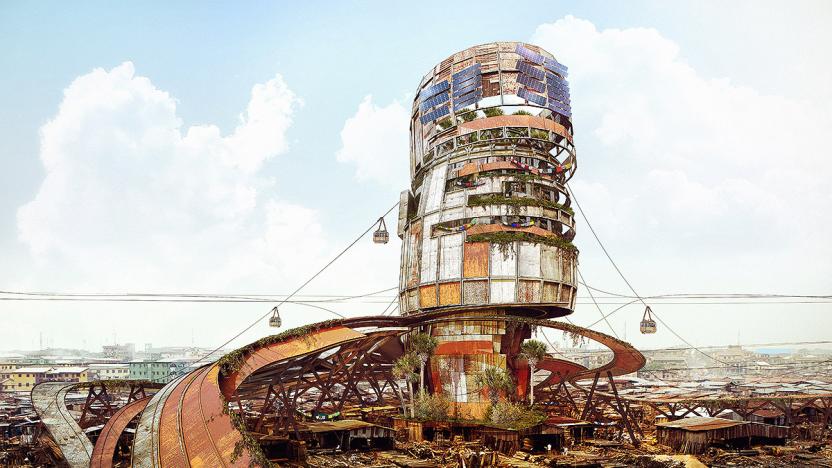
'Shanty Mega-structures' rise above a future Lagos
Science fiction authors have always dreamed up cities of the future. When it comes to seeing those dreams realized, though, artists and filmmakers have heavily focused on what Western cities might look like. There are, however, exceptions to that rule. Olalekan Jeyifous is a Nigerian-born artist currently based in Brooklyn. With a background in architecture, much of his work is focused on urban environments and buildings. In his 2015 series Shanty Mega-structures, Jeyifous examines the future of improvised housing. Shanty towns are a common feature among the developing world, with houses built with no regulatory oversight, typically with a lack of safe water, electricity and sanitation. The image above is but one from a larger collection, which can be viewed on Jeyifous' site. It depicts a future "mega-structure" among the improvised waterfront housing of Makoko in Lagos, Nigeria. The buildings across the series seem almost fungal, looming over their neighbors, weaving organically together high above the shanty towns.
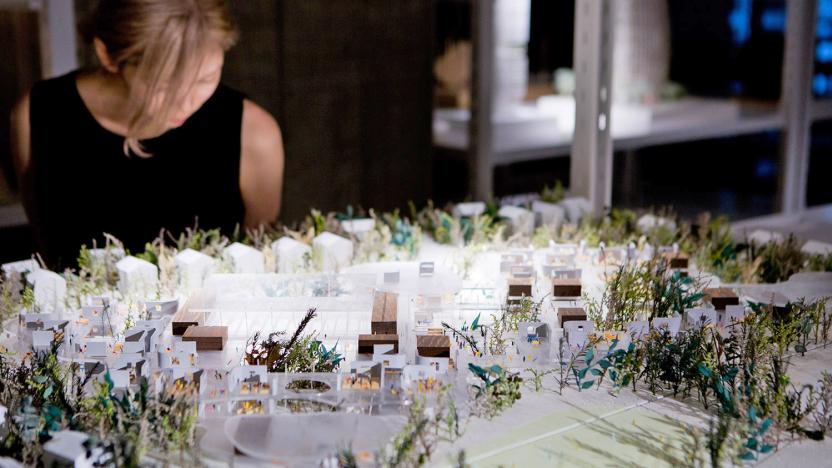
A city in a warehouse in a city
I've always had a fascination with architectural models. This interest rose in recent months, following a move to a new apartment block. I love my new place, but it has its problems. There are over-sized windows that capture too much heat, coupled with poor ventilation. There's the glass panel on the balcony, which rattles whenever the wind picks up. And the surrounding area isn't beautifully landscaped, but instead a patchwork of concrete and the detritus left behind from years of construction. In the lobby of the block, there's a scale model of my building, complete with tiny figures lounging on balconies, landscaped surroundings with vibrant plants and children playing on the terrace. Whenever I look at that model, everything is perfect. It's an idealized version of the real thing; the architect's dream for what this place could've been, rather than the considerably more drab reality. And in Tokyo, there's a museum that houses those dreams: The Archi-Depot. Opened a few months ago, it's a giant room built to contain tiny structures. Shelf after shelf is filled with models, many of which are of real-world Tokyo buildings, including the tallest structure in Japan, Skytree, Haneda Airport and others. Each is accompanied by a QR code that takes you to an information page on the building, where you'll find blueprints, information on architects, and links to other works.

This Olympics photo was brought to you by a robot
At every major swimming event, the competitors aren't the only ones in the pool. In order to bring you footage from the various races, cameras from various news and photo agencies litter the bottom of pools. Traditionally, these have been remotely triggered, but a photographer had to guess where the swimmer would be when placing their camera. This year, photo agency Getty has a new piece of tech. Photographers Al Bello, Clive Rose and Adam Pretty are all in Rio for the 2016 Olympic Games, and have been using a robotic rig that gives them far greater flexibility.
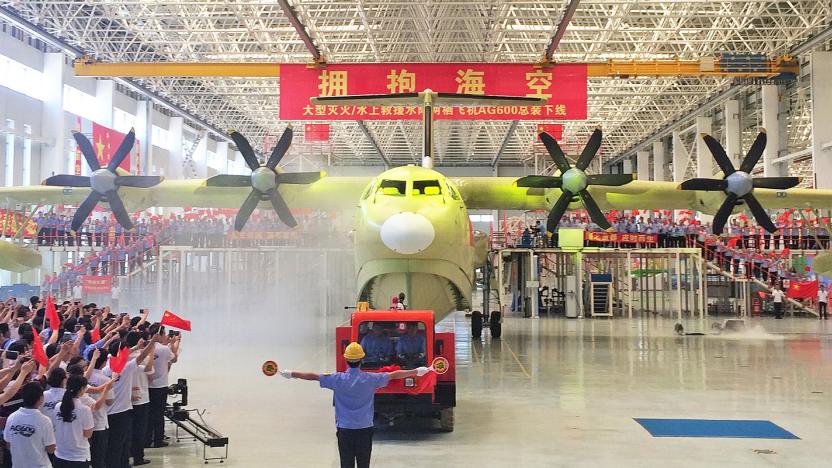
China finishes building the world's largest amphibious plane
On November 2nd, 1947, the Hughes H-4 Hercules took off for the first time. The test run lasted less than a minute, and it traveled for around a mile. The H-4, erroneously nicknamed the Spruce Goose, was a behemoth; its wing 320-foot wingspan is still the largest of any plane to fly. But that flight was also to be its last; a proof of concept developed by Howard Hughes that was shelved shortly after the test. Now, China's state-owned aircraft maker AVIC has built an amphibious plane that fulfils Hughes' dream of a colossal sea-faring plane.
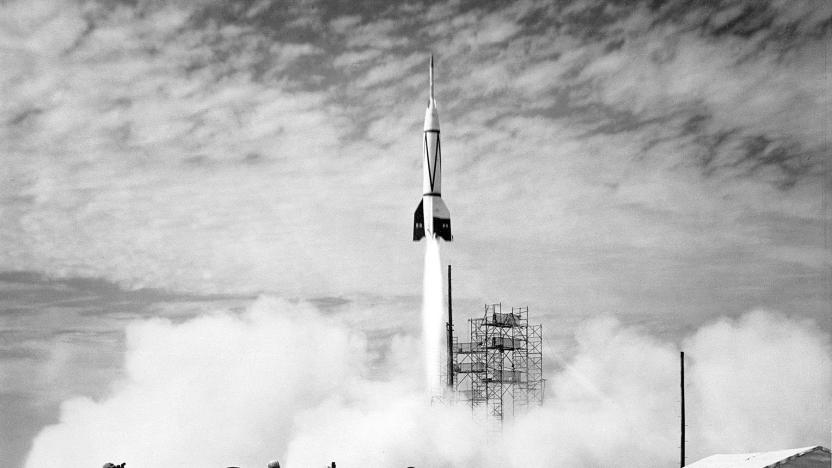
The birth of a spaceport
The government may have ceded the development of spaceships to companies, but Cape Canaveral Air Force Station remains a key site for space exploration. Together with the neighboring Kennedy Space Center, Cape Canaveral played an integral part in the space race, and continues to host launches to this day.
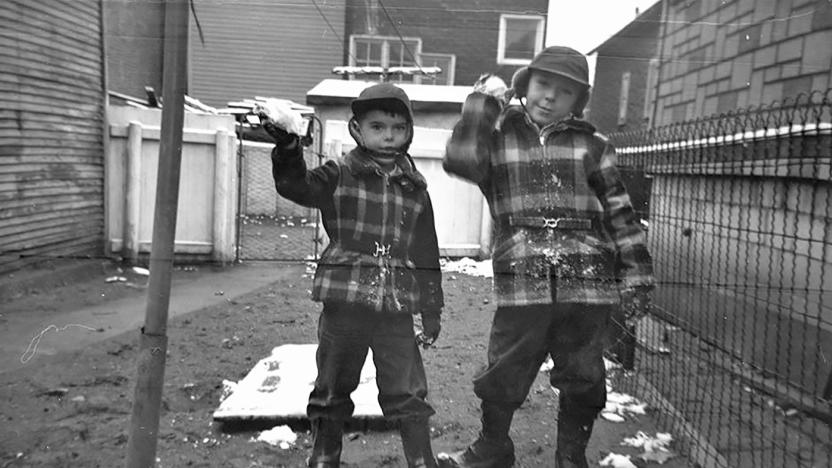
Rescuing 1,200 rolls of film that were never processed
The Rescued Film Project rose to prominence last year with the release of hundreds of photos by an unknown World War 2 soldier. Founded by photographer Levi Bettweiser, the organization seeks out unclaimed film rolls from the 20th century before developing and archiving them for posterity. Bettweiser has previously kept this effort going with donations alone, but for his latest haul, he needs a little help. The Rescued Film Project has recovered 66 bundles of film containing around 1,200 rolls, and it's currently seeking funding on Indiegogo to pay a third party to process them. The bundles are meticulously packaged. Rolls are labeled with the camera used, photo details and details about the subjects. Each was then wrapped in foil and athletic tape, with additional labeling on top. They were then tightly packed into cigar boxes and wrapped in multiple layers of foil, newspaper and tape, before being labeled again. The photographer is only known as "Paul," and was a steel worker.
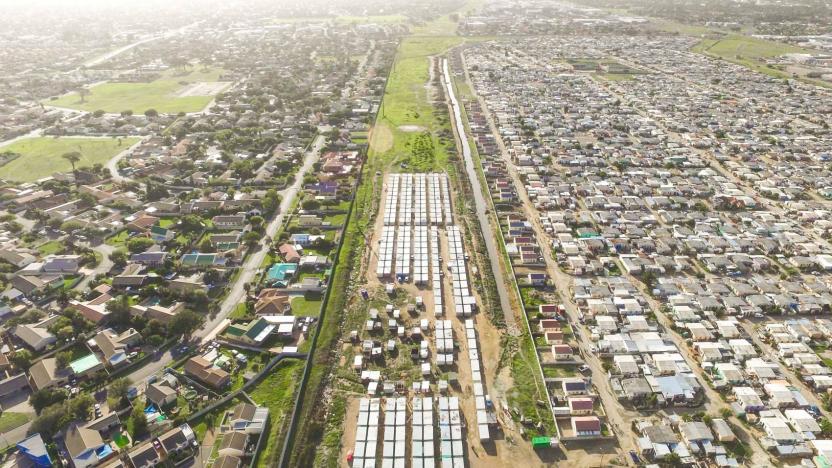
South Africa's rich-poor divide, captured by drone
About 25 miles east of Cape Town lies Nomzamo, a township with a rough population of 60,000 and a population density of 44,000 per square mile. About 25 miles east of Cape Town lies Strand, a seaside resort with a rough population of 55,000 and a population density of 6,700 per square mile. United by geography, the two suburban areas are divided by all else, including a buffer zone supported by fencing. The predominant language of Strand is Afrikaans, while in Nomzamo it's Xhosa. Strand is structured suburbia for the middle classes, Nomzamo is the legacy of decades of apartheid, born from the Lwandle settlement.
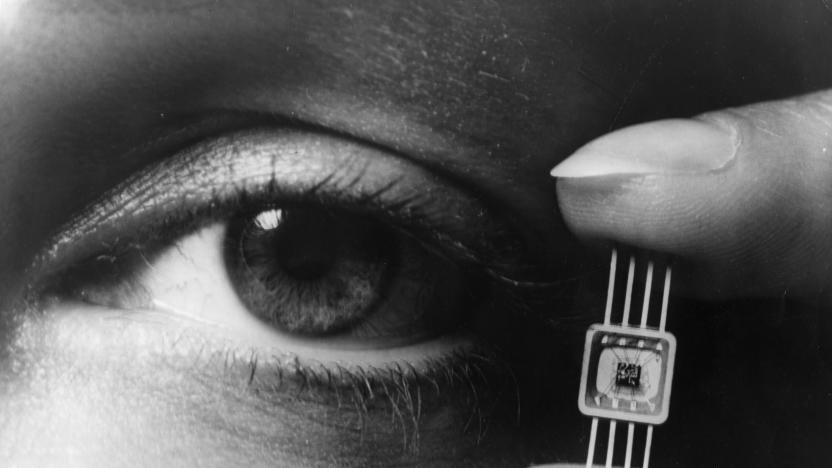
The marvel of microchips
Half a century ago, Westinghouse buried a time capsule at the 1964 New York World's Fair. In it were "Molecular Blocks," a company invention that squeezed "the functions usually performed by an entire assembly of electronic components" into "small solid blocks of material." If that sounds familiar, that's because it describes what we now know today as an integrated circuit (IC) or microchip. Westinghouse was one of several entities pursuing IC development at the time, including Texas Instruments, Fairchild, and many Japanese companies. Despite early cooperation, by 1964 most were embroiled in patent litigation. The image above shows one those early ICs, held by an unnamed person for scale. The chip comes from Westinghouse's WM-1000 series, and is either an oscillator or video amplifier. Sadly we're unable to verify which -- what's left of Westinghouse is now a licensing arm of CBS. It was included in the time capsule among other scientific developments of the era, including antibiotics, a computer memory unit, a plastic heart valve and birth control pills.
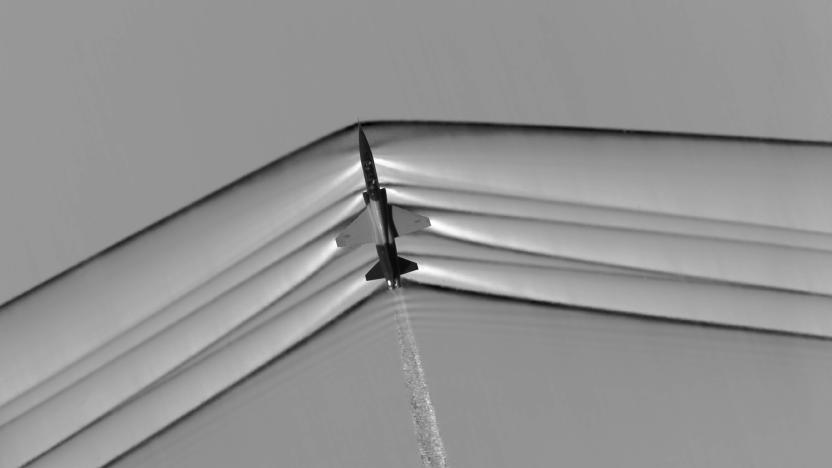
Beautiful images could lead to quieter supersonic jets
Researchers have been looking for the key to quieter supersonic transport for years. And if you've ever heard a sonic boom, you'll know why it's an important problem to solve. While it's impossible to eradicate that noise -- anything breaking the sound barrier is going to create the change in pressure that causes it -- you can make design adjustments to aircraft to decrease it.
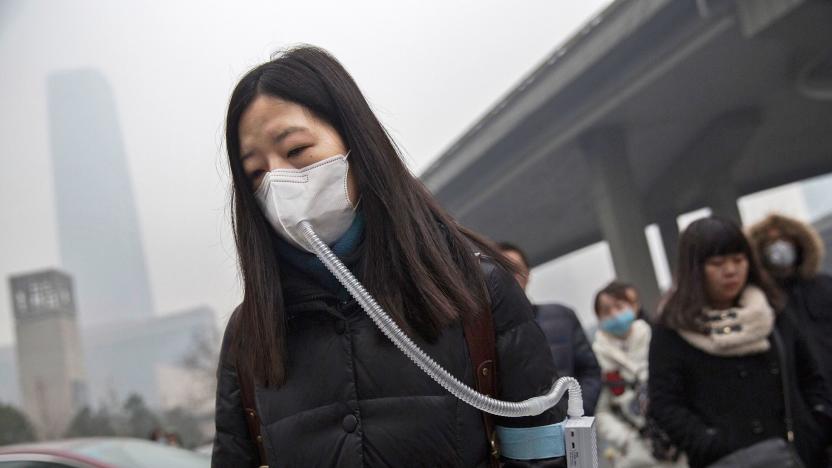
A high-tech solution to China's smog problem
China's heavy dependence on fossil fuels has led to it producing almost a third of the world's CO2 emissions. As well being a contributor to global climate change, burning combustibles like coal has led to the country's infamous smog problems. This smog contains fine particulate matter (PM2.5) that can cause serious health issues. PM2.5 has become a serious concern for many Chinese citizens, so much so that a market for high-tech personal filtration tech has begun to take off.
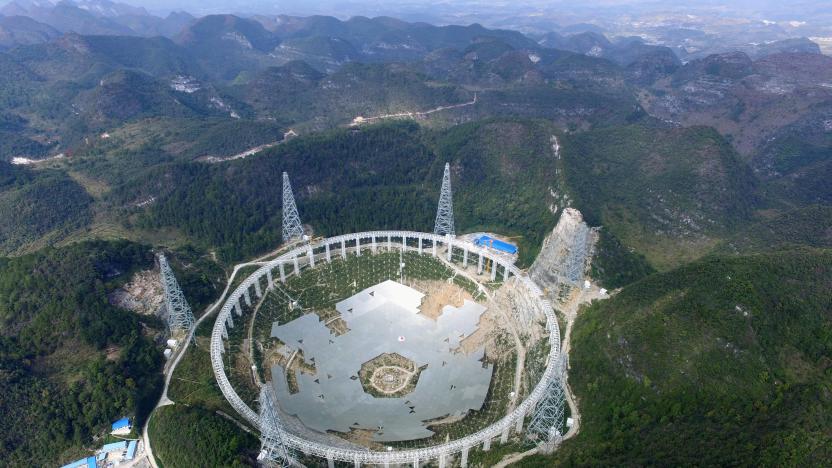
An otherworldly visitor nests in rural China
Guizhou province in the southwest of China is famous for its scenic landscape, unspoilt nature and ancient villages. But that's changing. Right now, engineers are constructing the Five hundred meter Aperture Spherical Telescope (FAST) in the province's Pingtang county. Guizhou was chosen to host the radio telescope precisely because of its landscape. The valley FAST is being built in is exceptionally well shielded from magnetic disruptions, while the ground underneath is both stable enough to hold the structure, and porous enough to drain away water and protect the telescope.
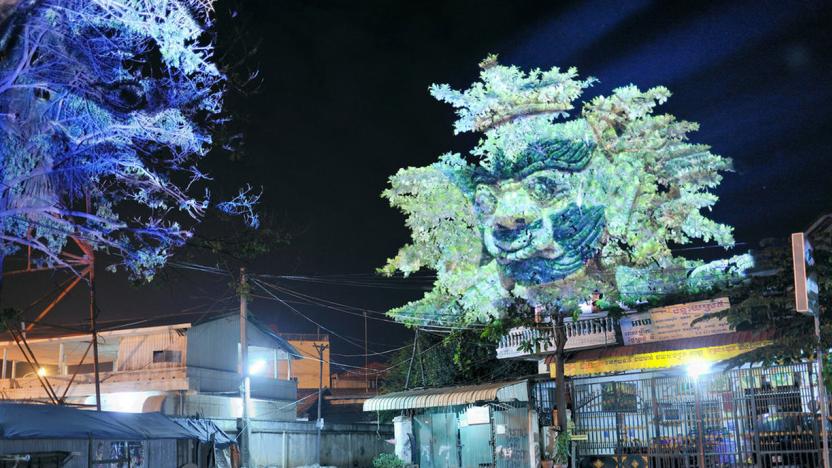
3D projections turn trees into divinities
That is not a photoshop, it's the work of French photographer Clément Briend. Shot for the series Cambodian Trees, the image was created by using multiple projectors to turn trees in Phnom Penh, Cambodia into light sculptures. Briend's 3D projections are created quite organically. He starts with an idea, and then slowly works on the projection points by hand until what you see above takes shape. The sculptures (the whole series is available on his site) depict divinities and other supernatural beings. Animism and magic are part of Cambodian -- and much of South East Asian -- culture, and Cambodian Trees plays with those themes. By casting these forms onto trees within urban landscapes, Briend connects the natural with the magical, and the city to the spiritual. The Big Picture is a recurring feature highlighting beautiful images that tell big stories. We explore topics as large as our planet, or as small as a single life, as affected by or seen through the lens of technology.

